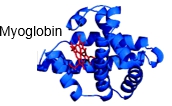To approximate the mass of a protein, it is essential to understand the unique masses of amino acids, with the exception of leucine and isoleucine, which are isomers and share the same mass. Proteins are typically large, consisting of hundreds to thousands of amino acids, making precise mass calculations cumbersome. Instead, we can use a simplified approach based on the total number of amino acid residues.
The first factor to consider is the average molecular weight of the 20 free alpha amino acids, which is approximately 128 grams per mole. It is important to note that "free" amino acids are those that are not linked by peptide bonds. The second factor involves the loss of a water molecule (H2O) during the formation of each peptide bond through a dehydration synthesis reaction. The molecular weight of water is 18 grams per mole. Therefore, the average molecular weight of an amino acid residue, accounting for the loss of water, is calculated as follows:
Average molecular weight of an amino acid residue = Average molecular weight of free amino acids - Molecular weight of water
Average molecular weight of an amino acid residue = 128 g/mol - 18 g/mol = 110 g/mol
Using this information, we can derive the equation for the approximate mass of a protein:
Approximate mass of a protein = Total number of amino acid residues × Average molecular weight of each amino acid residue
For example, to find the approximate molecular weight of a protein containing 200 amino acids, we can substitute the values into the equation:
Approximate mass = 200 residues × 110 g/mol = 22,000 grams per mole
This calculation illustrates how to efficiently estimate the mass of a protein based on its amino acid composition, facilitating a quicker understanding of protein characteristics in biochemical studies.



